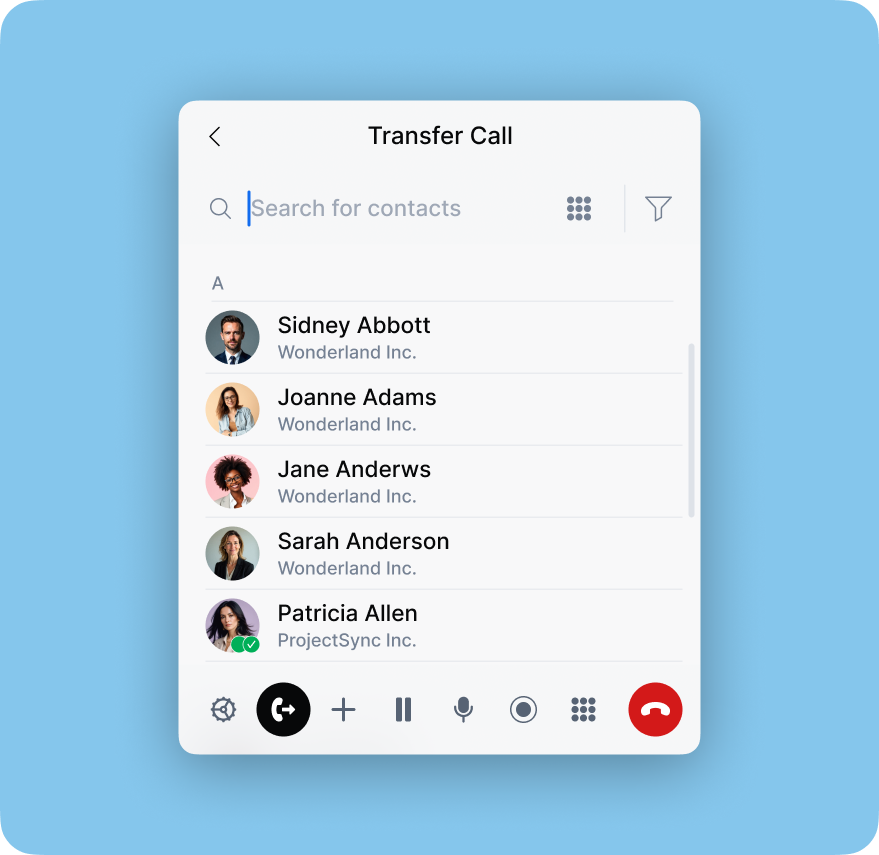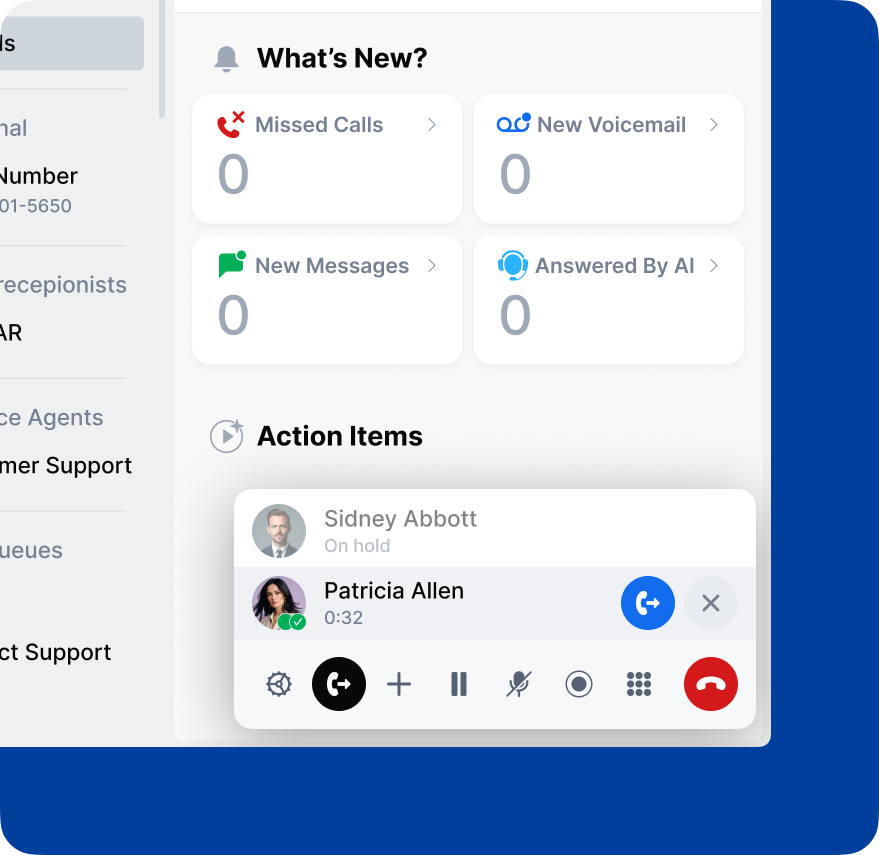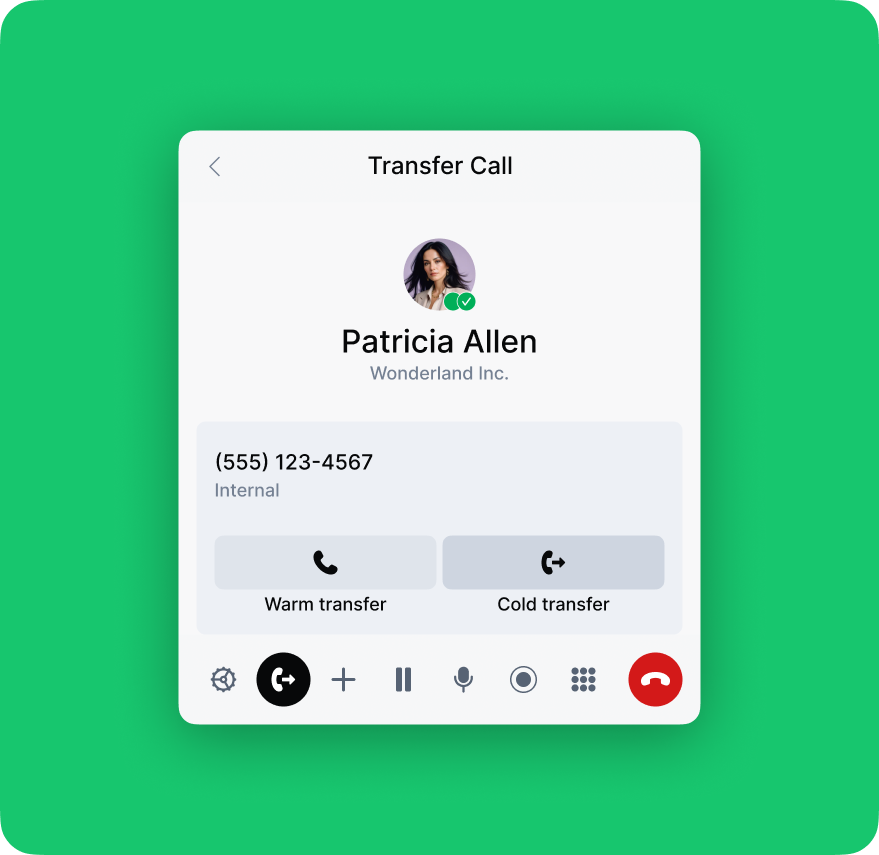Easily Connect Customers to the Right Team with Call Transfers
Avoid making callers repeat themselves or call back due to misdirected calls or unavailable support. DialLink’s business phone system offers both cold and warm call transfers, allowing you to quickly route incoming calls to the right teammate or department, either instantly or with helpful context, so every caller gets the support they need the first time.

Ensure faster, more effective call resolution
When a customer needs the right person to resolve their issue, call transfers let you seamlessly redirect active calls to the right team or department. This speeds up resolution time, improves customer satisfaction, and shows your commitment to responsive service.

Transfer calls smoothly with context
Avoid making customers repeat themselves. With warm transfers, you can place callers on hold and play branded music or helpful information while briefing the next agent, ensuring they’re fully informed before the conversation resumes. Collaborate internally within the same conversation thread to deliver a seamless, helpful handoff every time.

Reduce customer wait time with cold transfer
Quickly route calls to the right teammate without putting the caller on hold. Ideal for simple issues or misdirected calls, cold transfer skips the handoff briefing and gets customers help faster.
"DialLink's call transfer feature has made a huge difference in how we handle incoming calls. We can quickly connect customers to the right person without making them repeat their issue or call back. It's streamlined our support process and made our team look more professional and responsive."
Customer Care Expert, Insurance
Frequently Asked Questions
What is the difference between call transfer and call forwarding?
Call transfer is when you redirect a live call to another person or department, either immediately or after speaking to them first.
Call forwarding automatically redirects all incoming calls to another number, like when you're unavailable or out of office. It's a passive, rule-based setup, while transfers happen during an active call.
What is difference between cold and warm call transfer?
A cold transfer passes the caller directly to another teammate without prior communication or context.
A warm transfer, on the other hand, places the caller on hold while key details are shared, ensuring the next teammate is prepared when the call is connected. Warm transfers work best for complex issues or high-value conversations where context matters. With DialLink, you can play custom hold music, an important announcement, or information about your latest promotions while keeping your customer engaged on hold.
When should I use cold transfer or warm transfer?
Use cold transfers when the call is simple (e.g., wrong department) and no explanation is needed.
Choose warm transfers for support or sales calls where context matters, like when a customer is frustrated or has already shared sensitive information.
